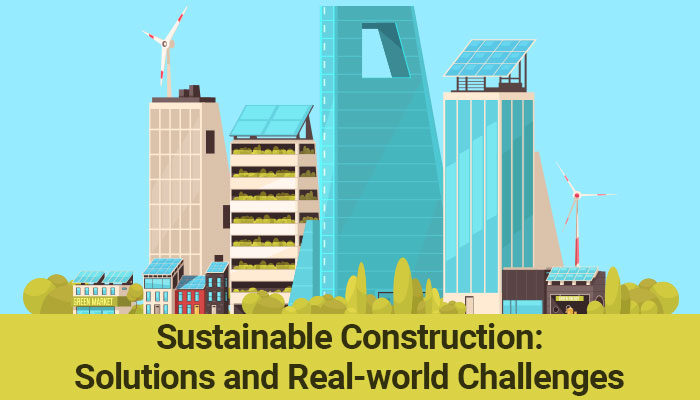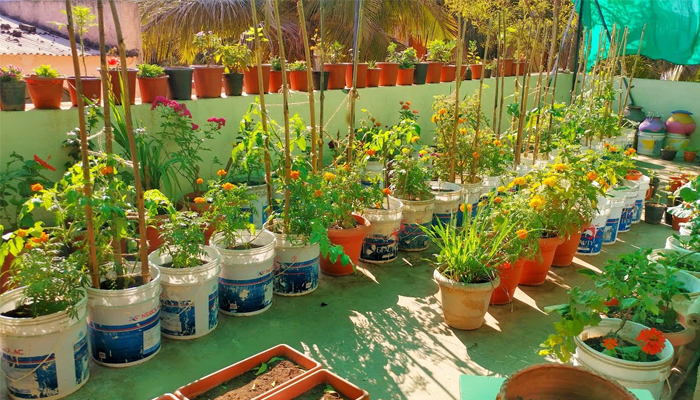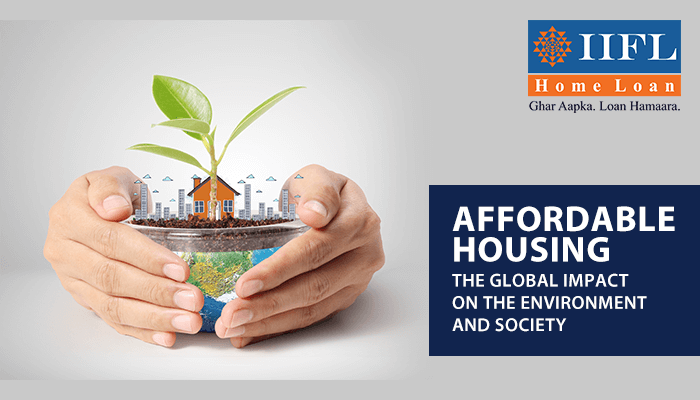GREEN WALLS and GREEN ROOFS

Being committed to an architectural practice based on the principles of environmental sustainability and social responsibility, Ashok B Lall has been engaged in architectural education since 1990 and has developed curricula and teaching methods to address environmental issues. His current interest is in developing strategies for sustainable urban development in the context of rapid urbanization.
I have been asked this question many times, ‘Which type of wall is cooler – mud wall, stone wall or concrete wall?’
The assumption that underlies this question is that materials possess coolth or heat. Well, the answer is that materials do not possess coolth or heat – but they interact with the temperature of their surroundings. As the surroundings gets warmer the walling material will absorb heat from the surroundings. As the surroundings get cooler the walling material will release heat to the surroundings. If the outside is hotter than the inside of the room, heat will flow through the wall from the hotter side to the cooler side. If the outside is colder than the inside the flow of heat will be in the reverse direction. What matters, then, is the capacity of a material to absorb heat (its thermal capacity) and the rate at which heat travels through the material (its conductivity). But we are more concerned with how effectively material resists the heat coming in from the hot outdoors, or how well it keeps the coolth inside the room. This is the material’s resistivity. The two properties of the walling construction - its thermal capacity and its resistivity, need to be seen together. Building scientists measure the inverse of Resistivity – the material’s Conductivity or its U Value. The lower the U value of a wall the higher its resistivity.
A better question would be – ‘Which type of wall will keep my room cooler and more comfortable during the hot season?’
Or
‘Which type of wall will minimise the need for air conditioning when the weather is hot?’
But remember, it is not just the wall that has to maintain the indoors comfortable. It is the entire building envelope that separates the inside form the outside - including the doors and windows, balconies, and shading projections - that has a combined effect.
We now have the Eco Niwas Sanhita (Part 1), a code for the design of the building envelop. It provides a method for Residential Envelope Transmittance Value (RETV) combining the effect of walls, windows, and shading. The code requires that the RETV of all residential buildings in the warm and hot regions should not exceed 15 watts per sqm (W/Sqm) of wall area. This is a good guide. Really good designs can achieve an RETV of 8 W/Sqm.
If you make walls of 200mm thick AAC blocks and keep glazed window sizes within 30% of wall area, and make sure that they are shaded from the direct rays of the sun during warm seasons, and the windows can be opened fully to take the benefit of the cool evening and night air, you have a good design – a GREEN design for walls.
In humid climates you will need more ventilation. Add opaque window panels below or beside the glazed window that are opened when you want the breeze, always making sure that they are shaded from the sun if opened during a sunny day.
How do you minimise the need for air conditioning? This is another question that I am asked. Air conditioning is very expensive. Every hour of running one room air conditioner costs 7 to 8 rupees.
A better way to ask the question is to ask ‘How does one maximise the duration of seasons and times of the day and night when I can be comfortable without switching on the air conditioner.?’
We call it Passive Design. Designing the building envelope according to the local climate to minimise the need for cooling by air conditioners or heating with electric heaters.
Here are a few tricks! Remember, the walls, the windows and the roof all work together to make the indoors cool and comfortable.
-
1. Open windows to catch the night breeze and cross-ventilate the rooms. If there is no breeze, use the kitchen and toilet exhaust fans to pull the cool air through the rooms.
-
2. Paint the walls that face East or West with high SRI (solar reflective index) paints.
-
3. Make a shading structure over the roof and insulate the roof well.
But the climate is not the same everywhere.
Hyderabad
Hot-dry Climate - This is a climate which is hot and dry most of the year. Days get very hot, but nights are much cooler. During the Monsoon it is cooler but humid. There may be a short, mild winter.
Chennai
Warm-humid Climate – In this climate temperatures are not so high, but it is the high humidity that causes discomfort. Even in the hottest season, nights are okay if you have a good breeze. If you stay in the shade, away from the hot sun, four months of the cooler season are comfortable.
Chandigarh
Hot and Cold (Composite) Climate – There is a long and hot summer, it cools down during the monsoon rains, followed by a hot and humid season, a pleasant autumn follows and then comes a short winter with very cold nights and misty mornings. Before Summer arrives, there is the pleasant season of Spring.
Shimla
Cold Climate – In this climate the winter is cold and long, Spring and Autumn are cool but pleasant and the short Summer is warm and a little humid.
The Innovation Challenge!
What we are looking for is the invention of a ‘Living Wall’ – a wall that can change its thermal properties according to the season and from day to night - a living organism - a truly GREEN wall!!
1. During summer daytime it should neither absorb heat from the outside nor transmit heat from the hot outside to the inside of the house.
2. During summer nights, if it is cool outside, the wall should absorb and store plenty of coolth from the night air, which can be released slowly into the rooms through the day
3. During winters it should retain the warmth that comes in with sunlight entering through the windows and the warmth that is produced by people and their household gadgets – to stay warm at night.
4. During the pleasant season of Spring and Autumn and during the Monsoon it should work in the same way as during summers – keeping the heat out if it is hot outside and absorbing the coolth when it is cool outside.
Any suggestions? If you have any ideas for the Living Wall, write to gvp@iifl.com.
Tags
Disclaimer: The information contained in this post is for general information purposes only. IIFL Home Finance Limited (including its associates and affiliates) ("the Company") assumes no liability or responsibility for any errors or omissions in the contents of this post and under no circumstances shall the Company be liable for any damage, loss, injury or disappointment, etc. suffered by any reader. All information in this post is provided "as is", with no guarantee of completeness, accuracy, timeliness, or of the results, etc. obtained from the use of this information, and without warranty of any kind, express or implied, including, but not limited to warranties of performance, merchantability, and fitness for a particular purpose. Given the changing nature of laws, rules, and regulations, there may be delays, omissions, or inaccuracies in the information contained in this post. The information on this post is provided with the understanding that the Company is not herein engaged in rendering legal, accounting, tax, or other professional advice and services. As such, it should not be used as a substitute for consultation with professional accounting, tax, legal or other competent advisers. This post may contain views and opinions which are those of the authors and do not necessarily reflect the official policy or position of any other agency or organization. This post may also contain links to external websites that are not provided or maintained by or in any way affiliated with the Company and the Company does not guarantee the accuracy, relevance, timeliness, or completeness of any information on these external websites. Any/ all (Home/ Loan Against Property/ Secured Business Loan/ Balance Transfer/ Home Improvement Loan/ NRI Home Loan/ Home Loan for Uniformed Services) loan product specifications and information that may be stated in this post are subject to change from time to time, readers are advised to reach out to the Company for current specifications of the said (Home/ Loan Against Property/ Secured Business Loan/ Balance Transfer/ Home Improvement Loan/ NRI Home Loan/ Home Loan for Uniformed Services) loan.
 Login
Login






















